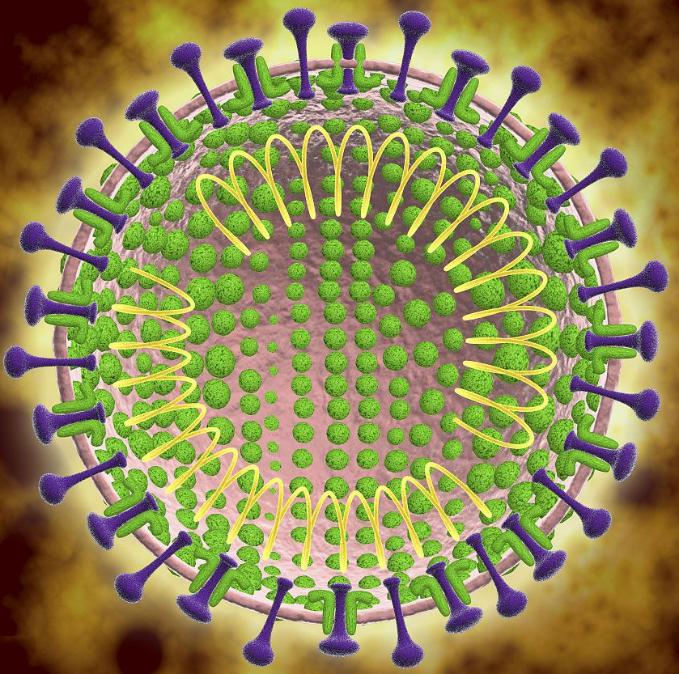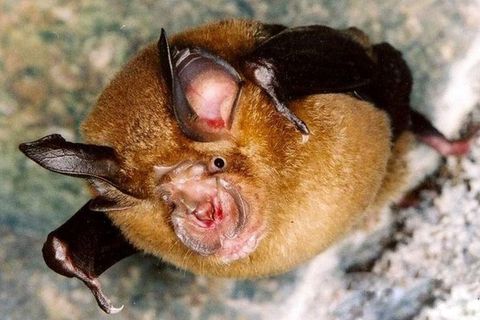Popular science enough: Will novel coronavirus bats "lie" this time?

Coronavirus particle structure
Life is not easy, but health is the most expensive. A recent hot topic — — Novel Coronavirus, disturbing the biosphere. Today, I’ll pick up bats, civets and camels … … And novel coronavirus’s "Love and Kill".
Two "Black History" of Coronavirus
Coronavirus is a kind of pathogen that mainly causes respiratory and intestinal diseases. Laboratory experts have studied the morphology of viruses, and electron microscope observation shows that these viruses have spinous processes like corona on their envelopes, which looks like a crown, so it is proposed to name these viruses coronavirus.
Coronavirus was first isolated from chickens in 1937. There are two genera of human coronavirus (HCoV): α Coronavirus and β Coronavirus. Middle East Respiratory Syndrome Coronavirus (MERS-CoV) and Severe Acute Respiratory Syndrome Coronavirus (SARS-CoV) belong to β Coronavirus.
In 1965, Tyrrell et al. isolated a virus named B814 from nasal lavage fluid of common cold patients by human embryo trachea culture. Hamer et al. isolated a similar virus from human embryonic kidney cells, and the representative strain was named 229E virus. In 1967, Mclntosh et al. isolated a batch of viruses from cold patients by embryonic trachea culture, and its representative strain was OC43 strain.
We are no strangers to SARS and MERS. SARS spreads quickly, its condition is dangerous and its mortality rate is high. Since the outbreak in 2002, in a short period of two years, it has infected 30 countries in five continents, with more than 8,000 people infected and 774 people killed, with a fatality rate close to 10%.
In 2012, the first human case of MERS-CoV infection occurred in Saudi Arabia. The virus is a novel coronavirus with high mortality, and it can also cause severe acute respiratory infection. The source of the virus is not completely clear at present. However, according to the genome analysis of different viruses, it is believed that MERS-CoV may come from bats and spread to camels, and camels may be the main storage hosts and animal sources of human infection. However, MERS-CoV has been popular in camels for decades, and it was not until 2012 that it first infected humans. The reason is still unclear.
Coronavirus and its natural reservoir

Chinese chrysanthemum-headed bat
Coronavirus exists widely in nature, and its natural hosts include human, cattle, pigs, birds, dogs, cats, rats and bats. As the second largest mammal in the world after rodents, bats are distributed in all parts of the world except the poles, and their habitats are diverse. As a member of the biosphere, bats play an important role in maintaining ecological balance. At the same time, it is also an important virus host, carrying more than 130 kinds of viruses, including Ebola virus, Nipah virus and other virulent pathogens.
When it comes to SARS, people will think of civets. In fact, civet cats are just "intermediaries" rather than the source of the virus. According to the data, in 2003, a research group of Hong Kong University detected SARS-CoV in civet cats and raccoons in Shenzhen animal market, Guangdong province, and the civet coronavirus was nearly 100% homologous to the coronavirus that caused SARS in humans. In the subsequent investigation, it was found that the positive rate of civet cats in the live poultry market was very high, but the civet cats in the farm were almost not positive for SARS-CoV, which indicated that the civet cats were infected with SARS-CoV only on the way to the market or in the market, but the farm was not infected. Animal experiments have proved that SARS-CoV is pathogenic to civet cats, which also supports that civet cats are not the natural hosts of SARS-CoV. Therefore, civet cats are only susceptible animals to SARS virus.
For a new animal-derived virus, we must find its source, so what is its source? Shi Zhengli, a researcher from Wuhan Institute of Virology, Chinese Academy of Sciences, led the team to confirm that bats are the natural hosts of SARS-like coronavirus, and through genetic information analysis and functional testing of the virus, it was further confirmed that bats in China are the natural hosts of SARS-like virus, which provided important evidence for the animal traceability of SARS-like coronavirus. Therefore, researchers believe that bats may be the natural hosts of SARS coronavirus, and civet cats are only intermediate hosts, but the current research has not revealed the relationship between civet cats and bat infection.
Disinfection may not be "everyone is good at it"
Boil a pot, rinse with water, spray enough disinfectant and wear N95 protective mask … … Is there a scientific basis for the disinfection and anti-virus methods commonly used by ordinary people? Coronavirus is sensitive to heat. Experiments show that SARS-CoV can be inactivated by heating at 56℃ for 90 minutes or 75℃ for 30 minutes.
In addition, the virus is sensitive to ultraviolet rays and commonly used chemical disinfectants, such as 75% alcohol, iodophor, compound quaternary ammonium salt, chlorine-containing disinfectant, phenol disinfectant, aldehyde disinfectant, peroxide disinfectant, etc., which can inactivate the virus in a short time at the specified concentration. The virus is not resistant to acid and alkali, and is also sensitive to organic solvents such as ether and chloroform.
Coronavirus usually causes people’s common cold, and can cause lower respiratory symptoms in adults and infants. The main clinical manifestations are fever, cough and runny nose. In severe cases, it shows acute respiratory symptoms such as laryngitis, bronchitis, bronchiolitis and pneumonia, and there are also reports that lead to gastrointestinal and nervous system symptoms. In addition, it can also cause severe acute respiratory infection in special populations such as the elderly, children and people with immunodeficiency.
Previous research data show that patients infected with coronavirus are the main source of infection. The management of infected patients should be early detection, early reporting, early isolation and early treatment. At present, there is no specific vaccine or drug prevention method for coronavirus, and there is no approved antiviral drug for coronavirus. Patients are still mainly treated with symptomatic support.
(Popular science materials are provided by China People’s Liberation Army Center for Disease Control and Prevention)